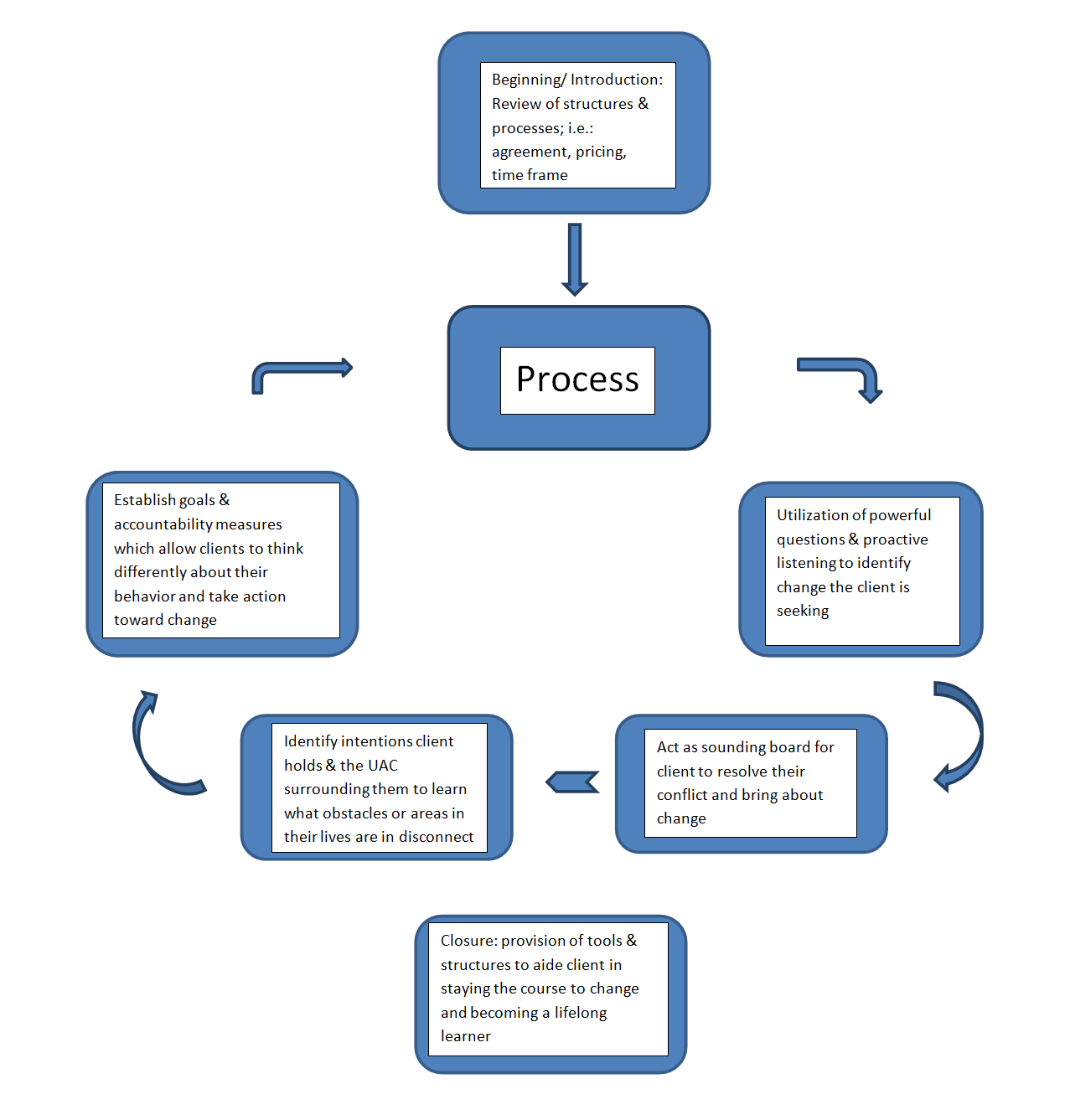A Coaching Model Created by Kelly Franko
(Leadership & Business Coach, UNITED STATES)
 Coaching to Move Clients Forward
Coaching to Move Clients Forward
The beginning of the coaching process will be used for obtaining client information, as well as, outlining the process and the methodologies that will be used. We will also review the time frames and costs associated with coaching during the first session.
My background as a social worker, trainer, professional speaker and leader, has given me the unique opportunity to develop this model. Through the work that I have done, I have been in contact with and managed many people in various roles. I define myself as a lifelong learner devoted to surrounding myself with positive energies and positive people. This allows me to continuously be in a space where I am comfortable expressing myself and becoming increasingly aware of the impact I have on others. Self- awareness is important to me as a means of uncovering areas for future learning. I attempt to interact with as many people as I am able so that I can be exposed to different perspectives, cultural influences, and overall diversity. Many of the roles I have had gave me the opportunity to develop skills that are utilized in coaching; communication, listening, empathy, and accountability.
As a coach, utilizing this model I will establish relationships based on trust, genuine communication, and confidentiality. Individual coaching sessions will be offered to clients seeking movement, or change in their lives, careers, or businesses. The sessions will target areas defined by the client as motionless or stagnant that keep them out of alignment with their personal values, beliefs, and goals. Deep questioning and proactive listening skills will be employed in relation to the formulation of client based goals that have been agreed upon and expectations established around.
Guiding principles of the Movement Model will be the use of empathy to share with the client my understanding of their perspective. As the coach, I will help the client become able to appreciate the value of why they are seeking movement or change and explore the conflict that exists between what the client says they are committed to and what they currently committed to as demonstrated by their day to day behavior.
The goals of the Movement Model focus on helping clients identify real or perceived obstacles that keep them from moving toward their intentions; helping clients explore and resolve areas of change that are not in alignment with their beliefs in order to find the best possible solution; identifying the clients innate values and goals to activate behavioral or lifestyle change; developing personal self-awareness, growth and development; and experiencing the sense of being happy in the moment, as it exists now, as a method of creating ongoing motivation toward their goal.
The Power of Movement Model exists to extend an opportunity to help others become aware of the elements creating the lack of movement or energy around an intention or goal. Identifying the intentions clients hold and their underlying beliefs surrounding them, will provide the framework needed to identify the obstacles or areas in their lives that are creating the disconnect and prohibiting movement.
Use of powerful questions, tools, and games will enhance my ability to bring the client to a state of awareness and create action around their intentions and their identified goals. Proactive listening enables me, as the coach, to be a sounding board through which the client can resolve the conflict that has them in a state of being out of alignment, thus creating change.
This process will allow clients to think differently about their behavior and what they are committed to and determine if in fact what they say they want is true. Clients can consider what benefits may be gained by changing and moving toward their goals.
A game I have developed spins out of something that was used at a 6th grade retreat. I have named it the Energy Web. Visualizing a spider’s web, I ask clients to imagine the points at which the web is secured to another structure. At each of these points, I ask that the client label the point with a pillar in their lives; faith, family, friends, work, achievement and so on. At the center of the web, is the client. Each point at the edge of the web connects to the client along the strands. The horizontal circles that are spun represent the experiences or milestones that the client has made with each of these pillars. A spider’s web has many functions. It acts as a net to catch nourishment for them; it is a nest or cocoon offering protection, and spiders can also suspend themselves from the web. While appearing so delicate and fragile, the strength of the spider’s web still baffles many materials engineers as it is stronger than steel and tougher than Kevlar by weight. Its combination of durability and flexibility are difficult to match.
What works for the spider works for us as well. The Energy Web gives the client an opportunity to see the support available to them in their lives and to identify with the strength of the web. It is from these pillars that we derive nourishment and protection so that we can build energy to move and change. The clien